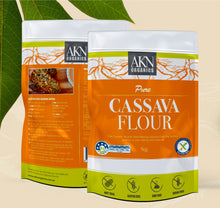What is Cassava Flour?
Cassava is a root vegetable and a staple food for many throughout Latin America, Africa and Asia. It is a long, woody root that originates from South America and the Caribbean where native peoples used it to extract starches, grate into meals and prepare breads and other staple foods. When Europeans – particularly the Portuguese – invaded the Americas, they adopted the root into their own cooking, fusing it with European and African techniques to form new dishes. As well, they took cassava roots to colonies in Africa and Asia.
Cassava goes by many names, including yucca, manioc and tapioca. From this root, we get tapioca pudding along with the chewy pearls you find in bubble tea. Fresh cassava root is available at many Caribbean, Latin American and African groceries. It is typically boiled or fried and has a very dense, starchy texture with a slight chewiness.
How to use Cassava Flour?
According to many sources, cassava flour is the closest naturally gluten-free and grain-free alternative to wheat flour. It has a neutral flavor and is powdery, unlike many other grain and nut flours that have strong flavors and gritty textures. As well, cassava flour gives baked goods a stretchy, chewy texture that replicates the chewiness of gluten.
Some bakers insist that cassava flour is a cup-for-cup replacement for white wheat flour. However, this may not be the case for all recipes. It’s best to start with some tried-and-true cassava flour recipes to get the hang of how this ingredient works before you start making substitutions in wheat flour recipes.








